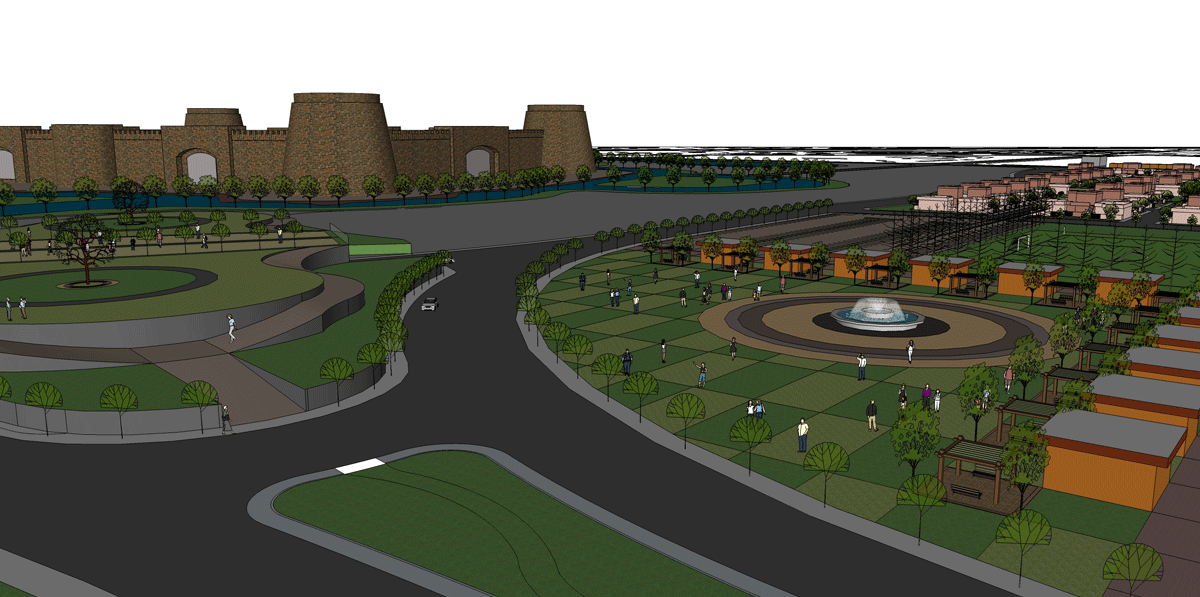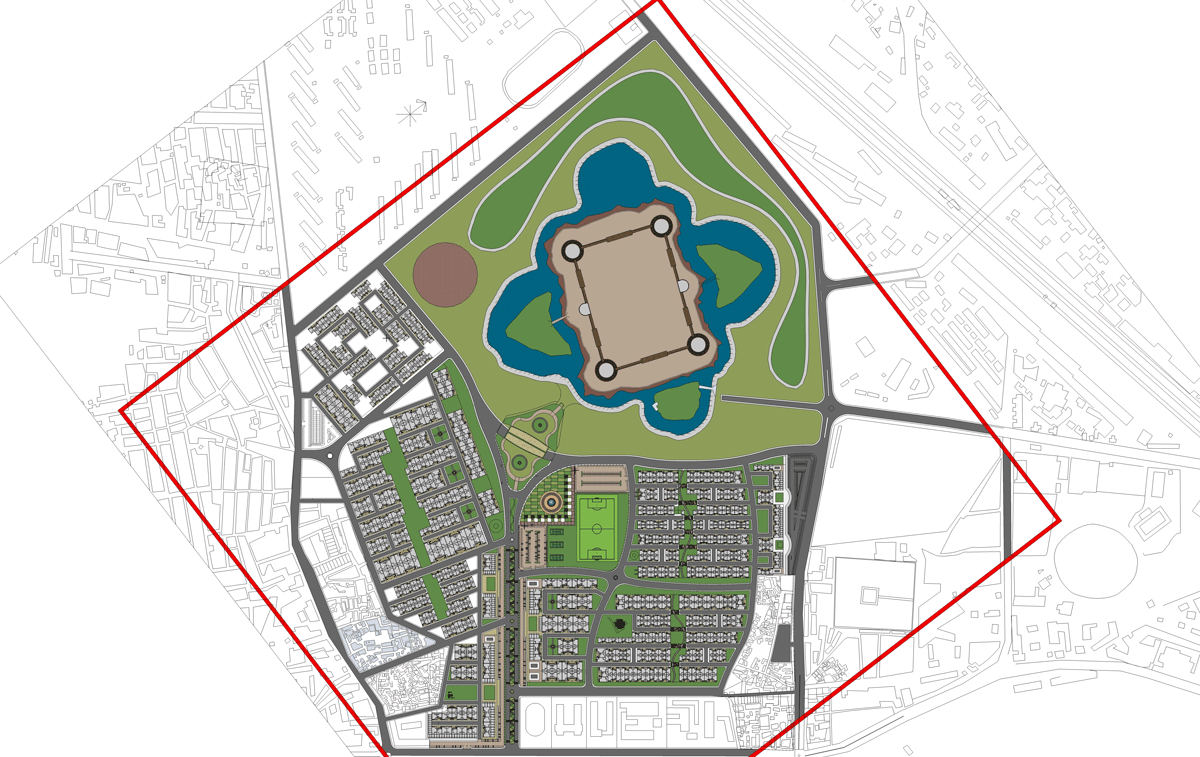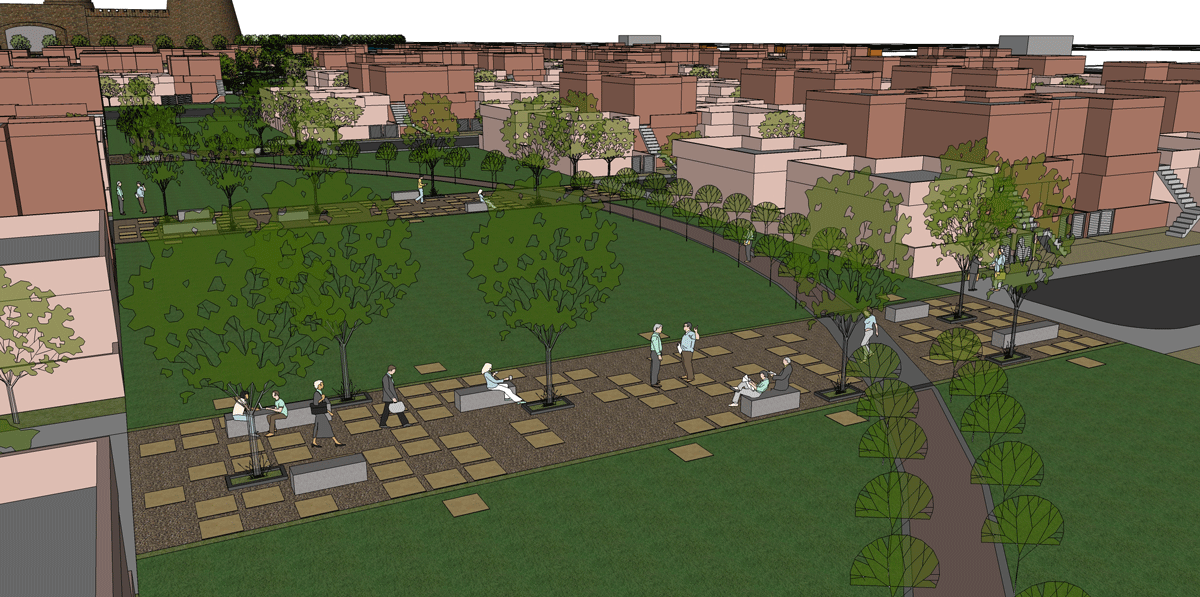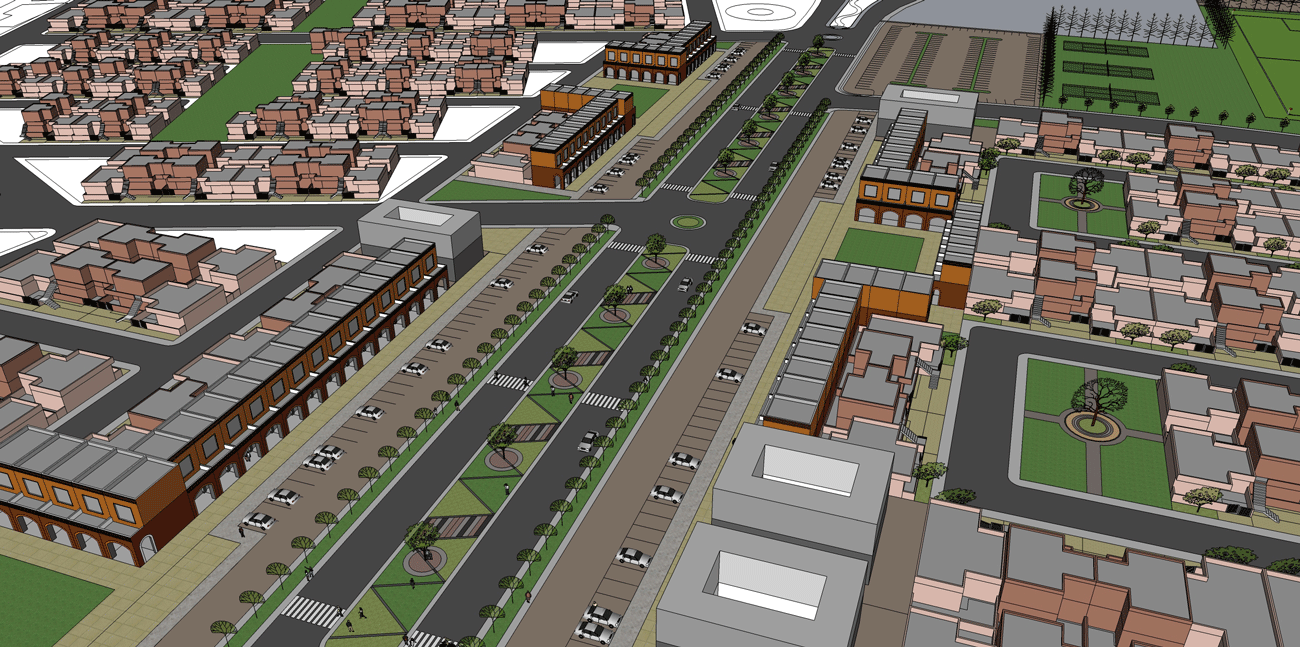Submitted by Pappal Suneja
Sustainable Urban Development via Traditional Neighbourhood Design
India Architecture News - Jun 12, 2018 - 09:40 19217 views

The present-day approach looks at sustainability in its separate spheres of economy, society, and the environment. The common understanding of sustainability is environmental protection, improved productivity, and a financially sound setup. This is the synopsis of the design proposal and study conducted by Architect Parul Galhotra and Pappal Suneja to understand the where about of a traditional neighborhood as it is regarded as an important component of the city and as one of the most humanly relevant scales. The neighborhood unit is a physical design tool that provides opportunities for its residents to interact with people and develop a sense of the place and its ownership.
The area under consideration is located in the center of the city, adjoining the historic Walled City. The main feature of the site is its strategic location amidst the major landmarks being Gobindgarh Fort, Durgiana Temple, a railway station and the Walled City.
Our basic objective towards development should be to consider the sustainable urban aspect that shall help in maintaining the balance between the artificial and the natural environment. The role of climatic and ecological balance has a direct implication on the sustainable development of a city. The rise in the level of carbon dioxide in the atmosphere due to greenhouse effect and extremities of climate has significantly affected the natural environment of Amritsar, the holy city. Amritsar has undergone a tremendous climatic change along with pollution exaggeration within the previous decade.

The study of the selected site identifies the factors that are responsible for the haphazard development of the city, including strict zoning of various land uses, unjust distribution of benefits and burdens, irrelevant street design discouraging pedestrians, building typologies discouraging social interaction and unsafe streets due to fast-moving cars and absence of pedestrians. Further, the criterion for selecting a site has been the ability of the site to provide newer development, if designed appropriately, with a number of opportunities to thrive and be socially sustainable. A few important ones are mentioned as follows:
1) Accessibility: The selected site has an excellent connectivity with both parts of the city (walled and outer); thus, people living here can avail the better one. Residents can also remain connected to their roots by staying near to religious places like Durgiana Mandir and Sri Harmandir Sahib.
2) Provision of Social Infrastructure: The location and a number of schools, medical facilities, meeting areas, and recreational facilities have an impact on the social sustainability of a place. The selected site has plenty of such facilities in its proximity.
3) Availability of Job Opportunities: Employment provides income. Similarly, workplaces provide a locale for social contact and interaction, which is necessary to improve the social quotient of the citizens. The site under consideration is in proximity to the Walled City, where many other employment opportunities are located along with the central business district.
4) Ability to Fulfill Psychological Needs: Security is an essential element in every neighborhood. People prefer to stay in a safe and secure place. Staying near their older homes and near to their religious places gives them a great sense of security. In addition, older people in the house usually have a daily regime of going to their places of worship. The site location allows these daily activities; it is certainly enhancing social relations and therefore, adding to the social sustainability of an area.

Further, considering the socially sustainable aspect, let us look back at the times when human beings started living in a permanent settlement along with their community members, who depended on each other for their day-to-day survival and needs. They would live and work together in the same street, meet in the nearby temple every morning; their children would play in the same street and the women would get together at the community well or the hand-pump. They had a sense of ownership for everything that was communal and would quickly identify any anti-social elements. The streets were small, safe, and full of life. The children would play freely within the streets as if they already knew that there were no fast-moving cars to harm them and that their grandma was sitting out on her cot to watch over them.
Now, the times have changed. With cars becoming more important than humankind is, the former is being seen all around, all day, until the cities sleep.
People want to get out of the congested city streets; those who do not want to are thrown out in the name of redevelopment and rehabilitation. They move out to the periphery only to form some gated enclaves, where physical barriers are too high to allow incidental social exchanges. Those living in the gated enclaves have higher living standards, but they live with a fear of being robbed or stabbed at any moment, as the streets stay empty most of the times and the neighbors hardly know each other. Kids do not play in the streets anymore and grandma cannot sit out, as there is no place to keep her cot and nobody to talk to.
Thus, social sustainability in design, integrated with a holistic approach, may be fruitful to achieve the overall sustainable development of the city, with an emphasis on following micro-level solutions inclusive of Mixed Use Zoning and Compact-City Approach, Extended Houses Concept, Increase in the Mass-Transit Use, Pedestrianized Environment and Walkability Concept, Up-gradation in a Building’s Energy Efficiency and Networking of Urban Open Spaces. Hence, the study concludes with providing design solutions for the selected site, with a view to evolving a sustainable neighborhood model. Some of them include avoiding sprawl to limit the use of cars, providing equal access to social and physical infrastructure, social inclusion incorporated in design by integrating diverse income groups, street design to encourage pedestrians over cars, building typologies encouraging social interaction and making streets safer by reducing thoroughfare and encouraging natural surveillance.

All Images © Parul Galhotra & Pappal Suneja
